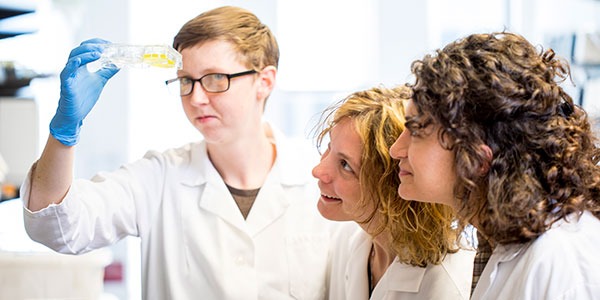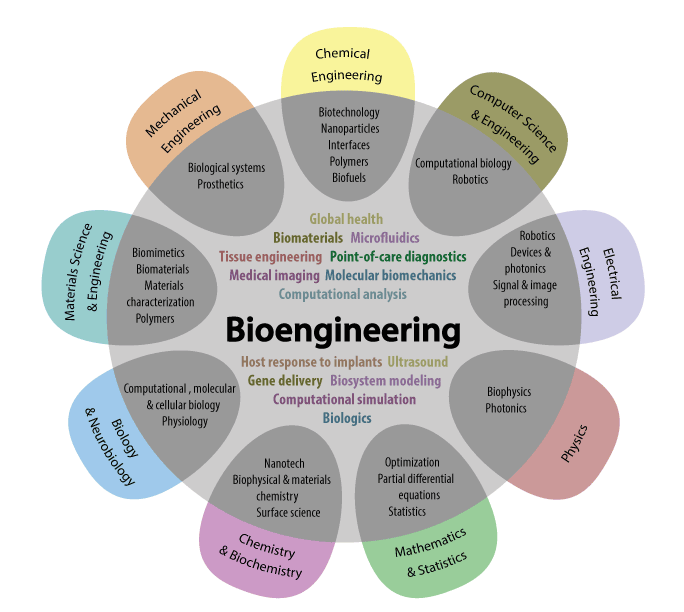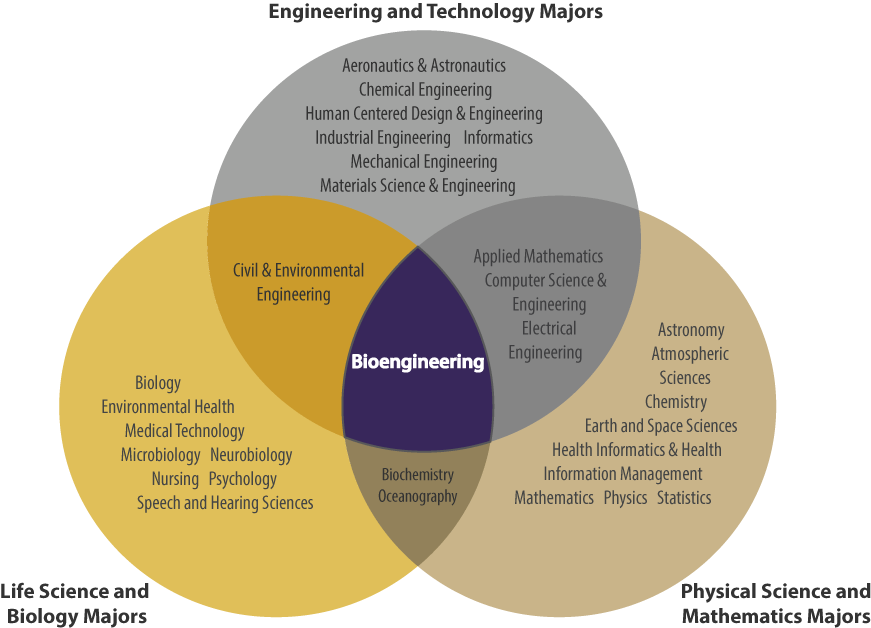Bioengineering addresses unmet challenges that make a difference in the world
At UW Bioengineering, we devise innovative solutions to open-ended, unmet challenges in biology, health and medicine. Our faculty and students are exploring solutions in the following biomedical research areas:
- “Smart” therapies for cancer
- Biocompatible implants that resist infection
- Nanoparticle contrast agents for enhanced imaging
- Paper-based diagnostics for home healthcare and global health
- Adaptable prosthetics for amputees
- Engineered heart cells for improved cardiac function post-heart attack
- Biomimetic materials to prevent gut infections
- Miniature cell culture tools for studying neurobiology
- Synthetic organisms for biofuels
- “Catch” bonds for novel adhesives
- Photonic biosensors for blood typing
- High intensity focused ultrasound to stop bleeding
- Computational methods for assessing brain growth and development
- DNA, protein and glycan microarrays for drug development
The Bioengineering approach is integrative and innovative
Bioengineers have the tools to approach unmet challenges from multiple perspectives.
Bioengineering is richly collaborative and interdisciplinary
Bioengineering focuses on integrative applications and solves problems left unanswered by engineering and physical/life science disciplines.
Bioengineering is the only degree that bridges engineering, biology and physical science
By studying bioengineering, students participate in a truly unique academic experience. Fields such as Applied Mathematics, Computer Science and Engineering, and Electrical Engineering explore connections between engineering and the physical and quantitative sciences. Biochemistry and Oceanography form at the intersection of the life, physical and quantitative sciences. Civil and Environmental Engineering applies engineering principles to specific life science disciplines.
However, only Bioengineering reaches across the boundaries of nearly every scientific and engineering major available at the University of Washington.
Still interested in Bioengineering?
Here are eight questions to find out if our program is right for you.
-
- Solving open-ended problems: Do you want to develop novel solutions to challenging, real-world problems?
- Quantitative approach: Are you interested in employing quantitative tools, including simulation and mathematical modeling?
- Biology, health & medicine: Are you interested in solving problems in biology, health and medicine to improve human lives?
- Independent research & design: Are you eager to conduct cutting-edge independent research and design projects (in vitro, in vivo or in silico) mentored by leading bioengineers?
- Hands-on learning: Do you enjoy learning by doing, through labs, projects and research?
- Team-based problem solving: Do you enjoy working with smart, mature and diverse team members to solve problems creatively?
- Broad knowledge: Are you excited by the prospect of acquiring broad knowledge spanning engineering and the physical and biological sciences?
- Cohort experience: Are you excited to progress sequentially through a core curriculum with a cohesive, talented cohort of BioE peers?
If you answered yes to all the above questions, then Bioengineering at UW may be perfect for you! Do not hesitate to contact us to learn more.





